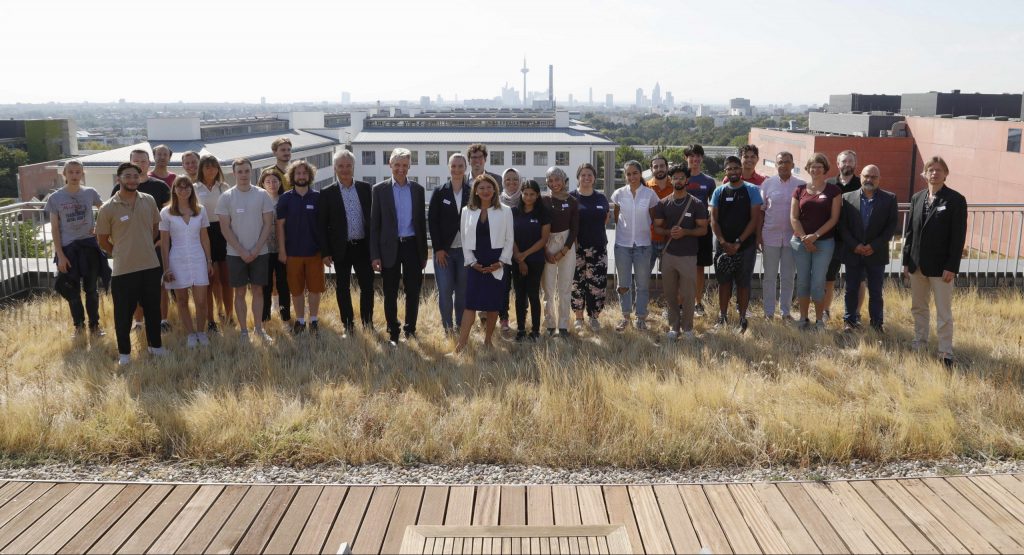What better way to start the academic year than a Summer school on astrophysics at Goethe University? During the last week of August, thirty graduate students from Goethe University and York University in Toronto gathered on the Riedberg campus in Frankfurt for the EXPLORE Summer School. Through an innovative pedagogy based on theoretical lessons and hands-on workshops, the participants learned about some of the hottest topics in contemporary astrophysics: gamma-ray bursts, black hole imaging and dark matter.
To celebrate the long-lasting partnership between the cities of Toronto and Frankfurt in cultural affairs, the mayor of Frankfurt Dr. Eskandari-Grünberg attended the inaugural session of EXPLORE. In a heartfelt speech, she insisted on the importance for society to uphold high-level scientific research. “At a time when hostility against scientific knowledge is often associated with anti-democratic ideas, we are in deep need of science and reason to persist as a functioning society,” she claimed. “It is especially important to cooperate beyond borders. I am glad that young researchers from Frankfurt and Toronto can collaborate on such exciting topics.”


The topic of gamma-ray bursts was covered at the Summer school, with a five-hour course by JETSET member Dr. Raphaël Duque. Gamma-ray bursts are the most energetic phenomena known in the Universe, and they are an essential part of the research conducted by the JETSET project. “Research on gamma-ray bursts is strongly connected to many topics such as cosmology, gravitational waves, nuclear astrophysics, relativistic jets, binary systems,” said Duque. “The topic is growing and one will hear more and more about gamma-ray bursts. Therefore, the idea for this course at EXPLORE was to pass on the basics of gamma-ray burst phenomenology and theory to the participants, so that they can actively participate in future discussions around them.”
Indeed, gamma-ray bursts are a very dynamical field of research, notably since a gamma-ray burst was first detected in coincidence with gravitational waves in 2017. This event strengthened the link between gamma-ray bursts and the mergers of compact objects such as neutron stars. Also, it kicked-off the era of multi-messenger studies of high-energy phenomena with gravitational waves, an era rich with promises for the new generation of astrophysicists.